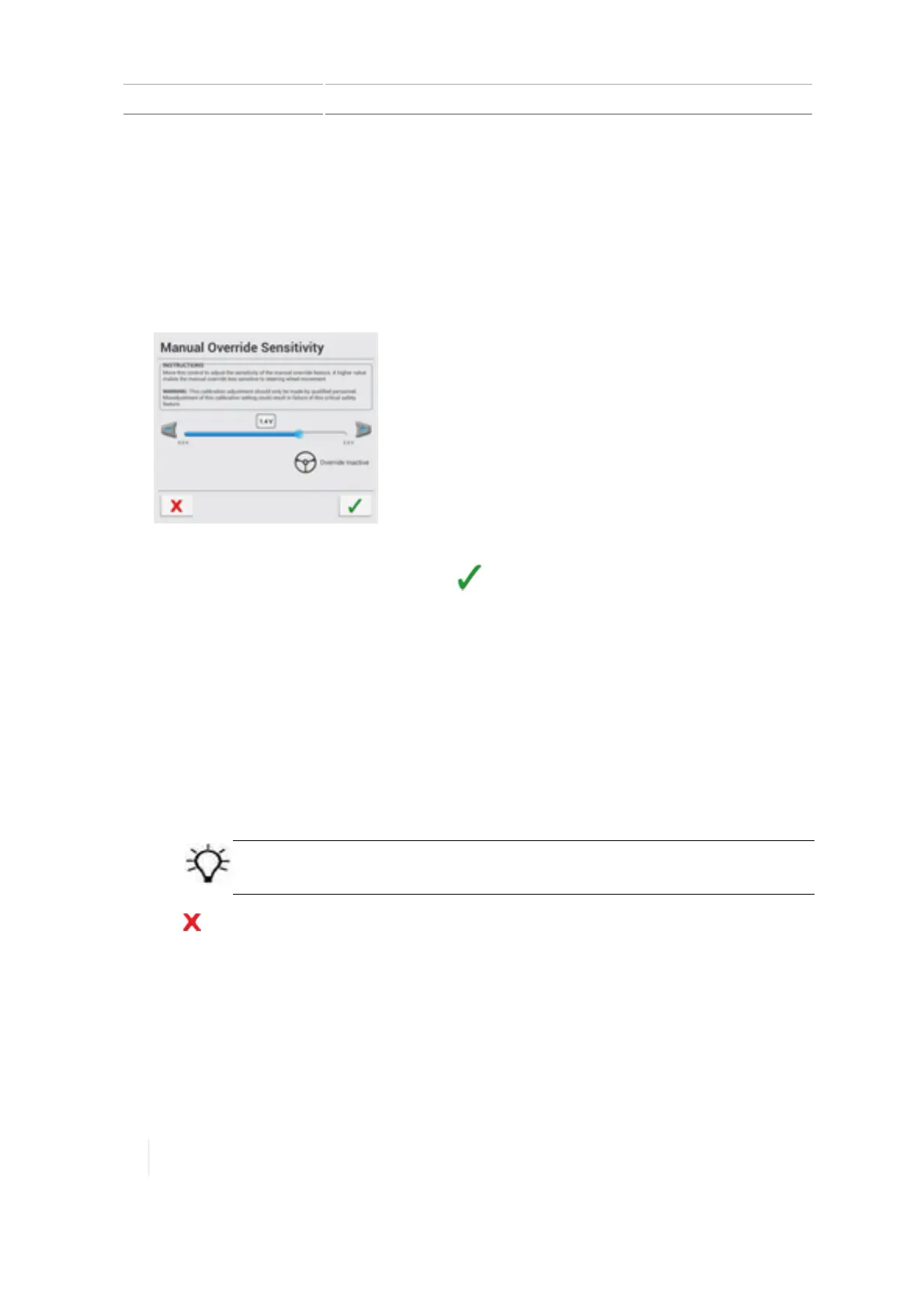6 Vehicles Autopilot system calibration
A high level of sensitivity causes the system to disengage more quickly, and you must wait longer
before you can re-engage. A low level of sensitivity causes the system to take longer to disengage,
and you will be able to re-engage more quickly.
1. At the Vehicle setup panel, select the vehicle you want to work with. See Select a vehicle, 145 for
detailed instructions.
2. Tap Calibrate.
3.
Tap Manual Override Sensitivity. The system displays the calibration tool.
4. Turn the steering wheel. If the threshold is crossed, the steering wheel will change color.
5.
If the disengage response is acceptable, tap and then perform the next calibration.
6. If the response is not acceptable, and:
a. The system disengages too easily, move the slider bar to the right to increase the value
and decrease the sensitivity.
b.
The system seems hard to disengage, move the slider bar to the left to decrease the value
and increase the sensitivity.
Note – The default setting provides a balance between rapid activation of the override
function and rejection of steering wheel motion due to incidental contact (for example,
due to travel in a rough field).
c.
Repeat steps 4 and 5 until the disengage response is acceptable.
Tip – Evaluate Manual Override Sensitivity under conditions which may affect the pressure of the
hydraulic system. For example, turn on the auxiliary hydraulics while you evaluate the sensitivity.
7.
Tap to exit without saving. The display returns to the CALIBRATION section where you can
perform another calibration or exit.
Steering sensor calibration
Steering sensor calibration converts the voltage output of the steering angle sensor into an
equivalent steering angle measurement.
Note – Steering sensor calibration is only for platforms with a rotary potentiometer installed.
154 TMX-2050 Display User Guide Version 1.075, Revision C
